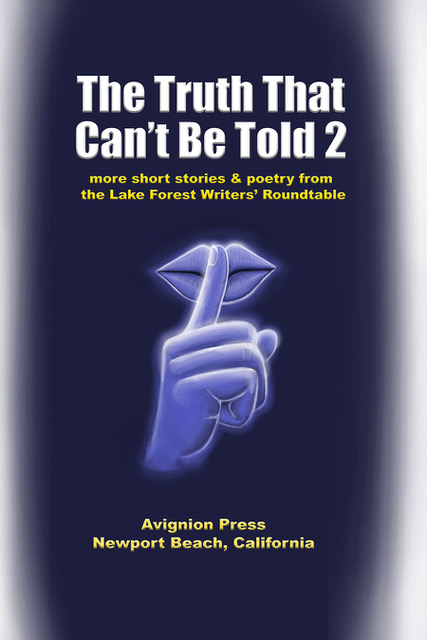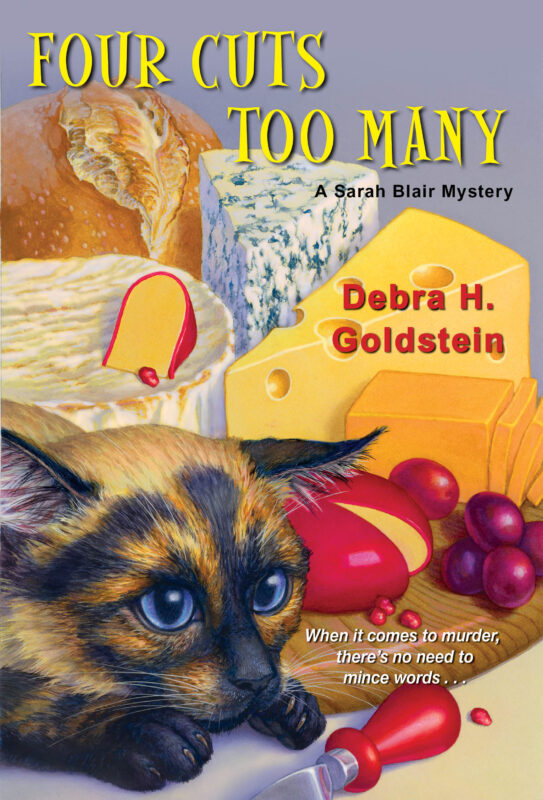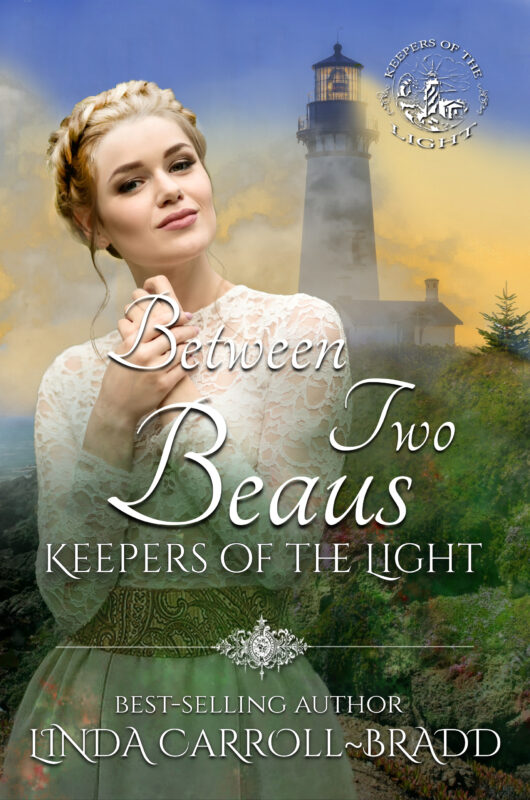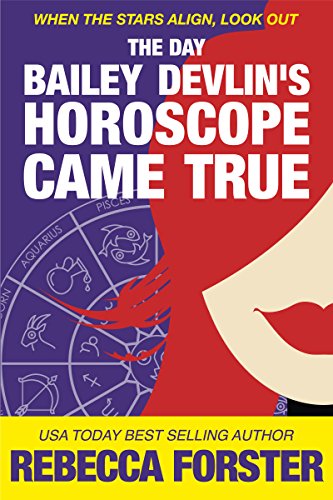Night Light by Dianna Sinovic
March 30, 2020 by Dianna Sinovic in category Quill and Moss by Dianna Sinovic tagged as flash Fiction, short storyNight Light
The garrison commander had barely closed his eyes, ready for the escape that sleep would grant him, when the duty officer shook his shoulder. Newbolt was new but competent, so his lapse of protocol—waking him instead of dealing with the crisis on his own—surprised the commander. The fear in Newbolt’s eyes was genuine, though.
“Another checkpoint problem?” For more than two months, the Runeheads had been slipping past the guards, somehow blending in with the regulars on the route into Locke Town. The garrison’s whole purpose was to monitor the traffic in and out of the city, to stop the Runeheads from gaining a foothold there.
“No, sir.” Newbolt was nervous.
Mosby sat up in bed and reached for his tunic. “What then?” He dressed quickly but thoroughly, aware that the chill of this alien night would knife through him if he wasn’t prepared.
“It’s the blinking light, sir.”
Inwardly, Mosby groaned. It was difficult enough to keep the garrison fully staffed because of its remoteness from Earth-based settlements. Throw in a race that lacked humanoid features and resented the soldiers’ presence. Now he faced his latest challenge, dispelling rumors of the Runeheads’ telepathic control of energy. Three men in the last week had requested a transfer after reporting a flashing light that immobilized them.
“Show me.” He followed Newbolt out to the perimeter gate. The guard station was awash in floodlights, but the brightness stopped a few feet out and the terrain beyond was inky, empty and quiet. “Shut off the lights,” Mosby ordered. He and Newbolt stared into the sudden darkness for several minutes. With his hand on his stunner, he wondered if he could trust Newbolt. Perhaps the duty officer and the others who had seen the phenomenon were in the first stages of hallucination disorder. He would need to file a report, encourage them to seek treatment, and ask for additional staff while they were on sick leave.
“There,” Newbolt hissed.
Mosby scanned the blackness, hoping he would not see anything.
“There—do you see it?” Newbolt’s voice quavered. “What is it? It’s got to stop.” He disappeared into the night.
“Newbolt, wait.” Mosby listened for his footsteps but heard nothing. He moved to switch the floodlights back on, but above and to his right, a green light began blinking. It was small but insistent, and it was moving. “Newbolt?”
0 0 Read moreBack Seat Drivers by Dianna Sinovic
January 30, 2020 by Dianna Sinovic in category Quill and Moss by Dianna Sinovic tagged as Dianna Sinovic, fiction, getting to the church on time, navigation
“In half a mile, turn right onto Oak Avenue,” GM said.
“No, no,” Tom T. cut in. “That’s incorrect. He’ll want to turn right on Elm.”
“Absolutely not,” GM countered. “Oak Avenue is the fastest way to get to the destination.”
“In one thousand feet, turn right on Elm Avenue,” Tom said.
“Oak.”
“Elm!”
“Never mind.” GM sighed. “The idiot missed the turn anyway. How many times does that make on this trip? Six?”
“I’m not sure he’s even listening,” Tom said. “Let me recalculate the next step.”

“Got it!” GM crowed. “Continue on this road for four miles.”
Tom stayed silent for a few moments. “Five miles, and then merge onto Route 492.”
“That route will put him there three minutes later than mine,” GM said.
“And there’s a gaper delay,” Waze piped up. “It will add thirteen minutes to the total travel time.”
“Know-it-all,” Tom said, then continued with a hint of smugness, “But he complains about you sending him on squirrely routes. Let’s go with GM’s suggestion of four miles.”
“We’re down to three miles,” GM said. “Continue on this road.”
“You already said that,” Tom said. “But I suppose you can’t be too careful. Knowing him, he’ll make the turn too early.”
“Or not at all—again,” GM said. “If he never pays attention, why bother activating all three of us?”
“In a quarter mile, turn left onto Ardor Lane,” Waze said.
“Where the hell did you come up with that?” GM said. “He’s not interested in the scenic route.”
“Ardor Lane,” Tom mused. “Isn’t that where Sabrina lives? We went there often enough.”
“Attention.” GM raised her volume slightly. “In one mile, turn right onto Church Street. The destination will be on your left.”
“Maybe he’s changed his mind,” Waze said. “What time is the wedding?”
“I think it’s twelve-thirty,” Tom said.
“And we’ll get him there with a half hour to spare,” GM said. “Nothing like cutting it close.”
“He’s making a U-turn,” Waze said. “Watch for slow traffic at the next intersection.”
“Don’t turn, don’t turn,” Tom shouted. “You’ll regret it.”
“Done,” Waze said. “Your new destination is Ardor Lane.” There was pride in his voice. “Sabrina, here we come!”
GM sniffed. “And I so wanted to see them throw the rice.”
0 1 Read moreFlight Pattern by Dianna Sinovic
December 30, 2019 by Dianna Sinovic in category Quill and Moss by Dianna Sinovic, Writing tagged as fiction, Flight Pattern
Flight Pattern
Joe cradled the cockatiel in his hands, then extended one of the bird’s wings to trim the flight feathers. His flock of birds now numbered eight, and one pair had three eggs incubating. The birds shrieked and twittered around him as the morning sun though the skylights lit up the aviary.
“Easy there,” he said softly, gently turning the bird and trimming the other wing. The bird’s mate was preening on a nearby branch.
After releasing the cockatiel, he surveyed the aviary. Carey was coming by in twenty minutes, expecting a tour. Would she like it? It was important to him that she understand his passion. These birds were precious to him—they kept him sane. He walked with effort to the doorway and looked back one more time.
He had met Carey a month ago, when she sat next to him at a township meeting. He had come to make a statement about the pending municipal budget. She was there to see her friend’s grandson get a community award. They got to talking and discovered that they had both lost spouses. They both read voraciously, he about the Civil War and she about women’s history. And she loved birds. Joe had vowed to himself that no one would ever replaced Amelia, but he was drawn to Carey’s joie de vivre. She wasn’t pretentious, and she seemed genuinely interested in him.
Joe’s arthritic hip wouldn’t let him go birding with her, but she said she was intrigued by his cockatiels.
But now he was nervous. Twice he checked his reflection in the hall mirror, smoothing his thinning hair. When he saw her drive up, he felt as he had all those years ago, when he and Amelia were on their first date. Could love happen twice in one life?
“Joe, you look pale. Are feeling alright?” Carey wore a peach scoop-necked shirt and tan capris. She looked lovely.
“I’m fine, fine.” He ushered her in the door and accepted her gift of freshly baked bread.
“I thought we might have a slice or two after we look at the birds.” She looked around at the modest living room, and Joe was pleased to see her nod in approval.
The aviary was at the back of the house, in a room that had once been the den. He had built a screened foyer that allowed him to look into the aviary before entering it. Most guests got only that far—a chance to see the birds but not handle them. Joe took Carey into the room itself. When a bird landed on his shoulder, he transferred it to her hand. He pointed out the markings that made cockatiels unique. He told her about building his flock after Amelia’s death. He showed her the nest with the three perfect eggs.
“Would you like one of the hatchlings?”
Carey shook her head. “Thank you, Joe, but I think the baby birds belong here, with your flock.” She seemed to sense his disappointment. “Don’t get me wrong. I appreciate the offer.” Her eyes twinkled. “In fact, I will take one of the hatchlings—as long as it stays in the aviary. That will give me an excuse to come here as often as you’ll have me.”
1 0 Read moreOpposing Views
October 29, 2019 by Dianna Sinovic in category Quill and Moss by Dianna Sinovic tagged as book discussions, goodreads, opinions
I regularly turn to my writing critique group to share my WIP and gain valuable feedback from fellow writers.

But I also find much value in my monthly book group—and not just because I love to read and then discuss what I’ve read. I marvel at how divergent opinions can be about a book. I’ve wondered at times: Are we talking about the same novel?
Sometimes—actually, rarely—the group coalesces in full delight about a book. More often, some love it, some find it so-so, and some are outright sorry they read beyond the first chapter.
Of course, sites like Goodreads offer ratings and reviews on books for people who don’t have or don’t want to be in a book discussion group. But sitting together with a glass of wine and a plate of snacks is my preferred way of finding out what others think about that new novel or latest work of nonfiction. (My group reads both.)

As a writer, I also see how my take on a book is often at least somewhat different from a nonwriter. I can get caught up in the craft—how do the sentences flow, why did the author use that story structure—and forget that most readers just want a good story. The structural elements are important; they are the solid framework upon which the good story is built. But many readers are willing to give a pass on less-than-perfect structure if they are compelled to keep turning the pages to find out what’s going to happen.
It’s often a reminder to me that as writers we can’t predict what will appeal or connect with readers. One example is Kate Atkinson’s A God in Ruins. While I thoroughly enjoyed the novel—the crisp narrative, the layered characters, the grim depiction of war—I was disappointed in the ending, which I thought was a cheap shot, the equivalent of a story in which the main character wakes up to realize it’s all been a dream. But one member of my group gave an alternative explanation. For her, the ending with its surprise reveal represented the awful price the soldiers paid: that they forfeited their future, of what might have been. I had to agree.
2 0 Read more
Coming into Focus by Dianna Sinovic
August 30, 2019 by Dianna Sinovic in category Quill and Moss by Dianna Sinovic tagged as description, descriptive writing, details, scenes, writing
The devil is in the details—not only when moving forward with any plan—or with life, but also when working to make a novel, short story, or even narrative nonfiction come to life for the reader.

In the following examples—selected randomly from my bookshelves—the specificity of the details pulls you right into each scene.
The slick black road became narrower, windier, became the single-lane track I remembered from my childhood, became packed earth and knobbly, bone-like flints.— from The Ocean at the End of the Lane by Neil Gaiman
His eyes had the bluish gray color of a razor blade, the same polished shine, and as he peered up at me I felt a strange sharpness, almost painful, a cutting sensation, as if his gaze were somehow slicing me open. — from The Things They Carried by Tim O’Brien
Her clothes can stay behind—her humble pale-print dresses, her floppy hat. The last library book can remain on the table under the sagebrush picture. It can remain there, accumulating fines. — from “The Jack Randa Hotel” in Open Secrets by Alice Munro
With just a few precise details, the authors do more than describe; they weave their tale. The road in Gaiman’s story speaks of the character’s childhood, perhaps a rough one, based on the bumpy flints. The razor-like stare of the man in O’Brien’s scene lets us know the main character has met someone from whom it may not be easy to disengage. And while we know that Munro’s character visits the library, the urgency of her departure makes an overdue book seem trivial.
So, details, yes, but only the right ones. That’s something I struggle with in my writing. As a former journalist, I was taught to focus on the who-what-when-how, so I’m prone to put in too much information.
Earlier this summer I was fortunate to hear Colum McCann speak at the Rutgers Writers Conference in New Jersey. I loved his Let the Great World Spin, and I wasn’t disappointed by what he had to say. In his keynote, he told us of his travels across America when he first arrived in the U.S. from Ireland. All interesting, entertaining stuff, especially when told in his lilting accent, but what really resonated with me was what he called “the beauty of the extreme detail.”
It’s finding the one bit of description to insert in the scene that makes your reader believe that what you’ve described is true. How do you find that one perfect bit? Through your research, of course, whether the research of human experience, through interviews, or by Internet searches.
McCann offered for his example his research into the world of ballet while working on Dancer. After spending hours of time hanging out with a ballet de corps, learning the terminology, the joys and frustrations, the daily life of a dancer, he took his young daughter to see their production of The Nutcracker. He later shared with the dancers his daughter’s hands-down favorite scene: the Waltz of the Snowflakes, with the snow drifting down. It was, the daughter said, magical.
Instead of agreeing with him, the dancers groaned: That scene was their least favorite. The “snow” that fell was swept up after every performance and set aside to let loose at the next one, without filtering out any of the dirt and debris that might have been on the stage. The dancers told McCann that the only thing they could think of when the “snow” began falling was that they would need to wash their hair.
He said that nugget of detail gave him more cred among dancers who read his book than if he had used other, more mundane descriptions of the corps.
I can’t say that I no longer struggle with the details in my WIPs, but they don’t devil me quite as much.
How do you decide which details to include in your writing?
2 0 Read moreAffiliate Links
A Slice of Orange is an affiliate with some of the booksellers listed on this website, including Barnes & Nobel, Books A Million, iBooks, Kobo, and Smashwords. This means A Slice of Orange may earn a small advertising fee from sales made through the links used on this website. There are reminders of these affiliate links on the pages for individual books.
Search A Slice of Orange
Find a Column
Archives
Featured Books
THE TRUTH THAT CAN’T BE TOLD BOOK 2
Unrequited love, quiet shame, guttural fear are the truths we hide from the world…often from those we love the most.
More info →FOUR CUTS TOO MANY
Sarah Blair gets an education in slicing and dicing when someone in culinary school serves up a main corpse in Wheaton, Alabama . . .
More info →THE DAY BAILEY DEVLIN’S HOROSCOPE CAME TRUE
Oh, boy! Oh, Bailey! What are you going to do when Fate decides to have a little fun?
More info →Newsletter
Contributing Authors
Search A Slice of Orange
Find a Column
Archives
Authors in the Bookstore
- A. E. Decker
- A. J. Scudiere
- A.J. Sidransky
- Abby Collette
- Alanna Lucus
- Albert Marrin
- Alice Duncan
- Alina K. Field
- Alison Green Myers
- Andi Lawrencovna
- Andrew C Raiford
- Angela Pryce
- Aviva Vaughn
- Barbara Ankrum
- Bethlehem Writers Group, LLC
- Carol L. Wright
- Celeste Barclay
- Christina Alexandra
- Christopher D. Ochs
- Claire Davon
- Claire Naden
- Courtnee Turner Hoyle
- Courtney Annicchiarico
- D. Lieber
- Daniel V. Meier Jr.
- Debra Dixon
- Debra H. Goldstein
- Debra Holland
- Dee Ann Palmer
- Denise M. Colby
- Diane Benefiel
- Diane Sismour
- Dianna Sinovic
- DT Krippene
- E.B. Dawson
- Emilie Dallaire
- Emily Brightwell
- Emily PW Murphy
- Fae Rowen
- Faith L. Justice
- Frances Amati
- Geralyn Corcillo
- Glynnis Campbell
- Greg Jolley
- H. O. Charles
- Jaclyn Roché
- Jacqueline Diamond
- Janet Lynn and Will Zeilinger
- Jaya Mehta
- Jeff Baird
- Jenna Barwin
- Jenne Kern
- Jennifer D. Bokal
- Jennifer Lyon
- Jerome W. McFadden
- Jill Piscitello
- Jina Bacarr
- Jo A. Hiestand
- Jodi Bogert
- Jolina Petersheim
- Jonathan Maberry
- Joy Allyson
- Judy Duarte
- Justin Murphy
- Justine Davis
- Kat Martin
- Kidd Wadsworth
- Kitty Bucholtz
- Kristy Tate
- Larry Deibert
- Larry Hamilton
- Laura Drake
- Laurie Stevens
- Leslie Knowles
- Li-Ying Lundquist
- Linda Carroll-Bradd
- Linda Lappin
- Linda McLaughlin
- Linda O. Johnston
- Lisa Preston
- Lolo Paige
- Loran Holt
- Lynette M. Burrows
- Lyssa Kay Adams
- Madeline Ash
- Margarita Engle
- Marguerite Quantaine
- Marianne H. Donley
- Mary Castillo
- Maureen Klovers
- Megan Haskell
- Melanie Waterbury
- Melisa Rivero
- Melissa Chambers
- Melodie Winawer
- Meriam Wilhelm
- Mikel J. Wilson
- Mindy Neff
- Monica McCabe
- Nancy Brashear
- Neetu Malik
- Nikki Prince
- Once Upon Anthologies
- Paula Gail Benson
- Penny Reid
- Peter Barbour
- Priscilla Oliveras
- R. H. Kohno
- Rachel Hailey
- Ralph Hieb
- Ramcy Diek
- Ransom Stephens
- Rebecca Forster
- Renae Wrich
- Roxy Matthews
- Ryder Hunte Clancy
- Sally Paradysz
- Sheila Colón-Bagley
- Simone de Muñoz
- Sophie Barnes
- Susan Kaye Quinn
- Susan Lynn Meyer
- Susan Squires
- T. D. Fox
- Tara C. Allred
- Tara Lain
- Tari Lynn Jewett
- Terri Osburn
- Tracy Reed
- Vera Jane Cook
- Vicki Crum
- Writing Something Romantic
Affiliate Links
A Slice of Orange is an affiliate with some of the booksellers listed on this website, including Barnes & Nobel, Books A Million, iBooks, Kobo, and Smashwords. This means A Slice of Orange may earn a small advertising fee from sales made through the links used on this website. There are reminders of these affiliate links on the pages for individual books.








































